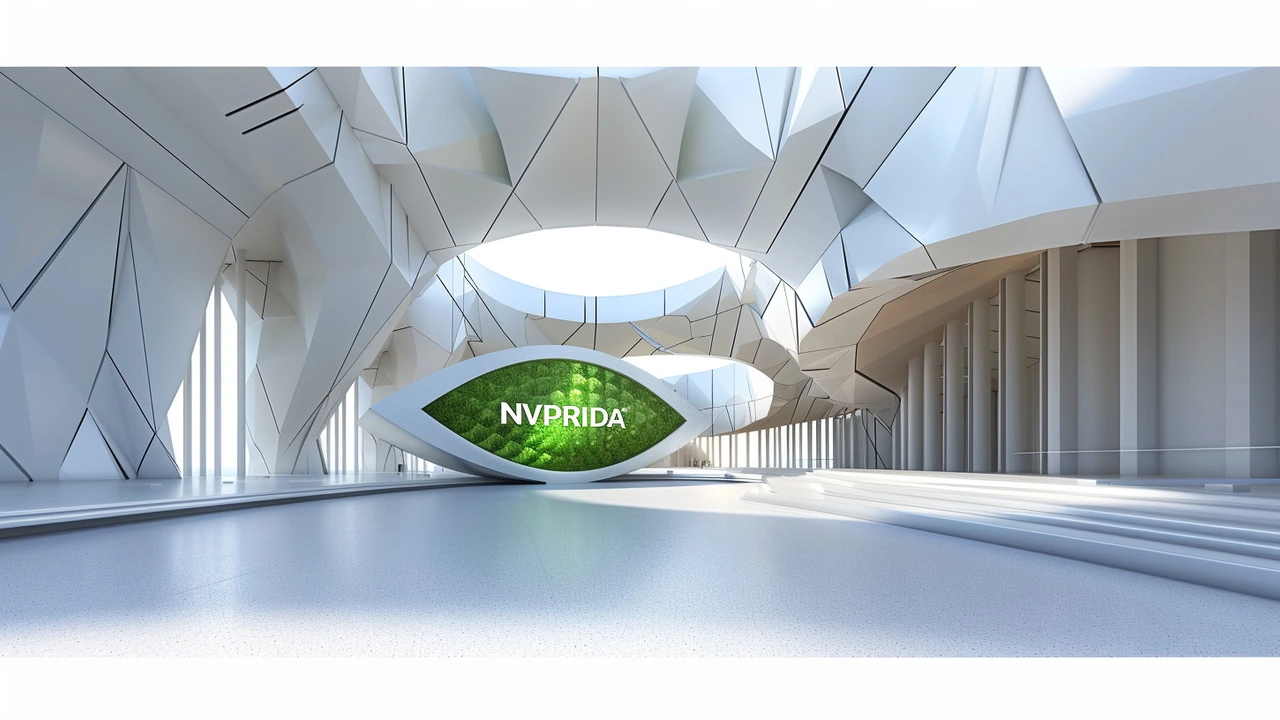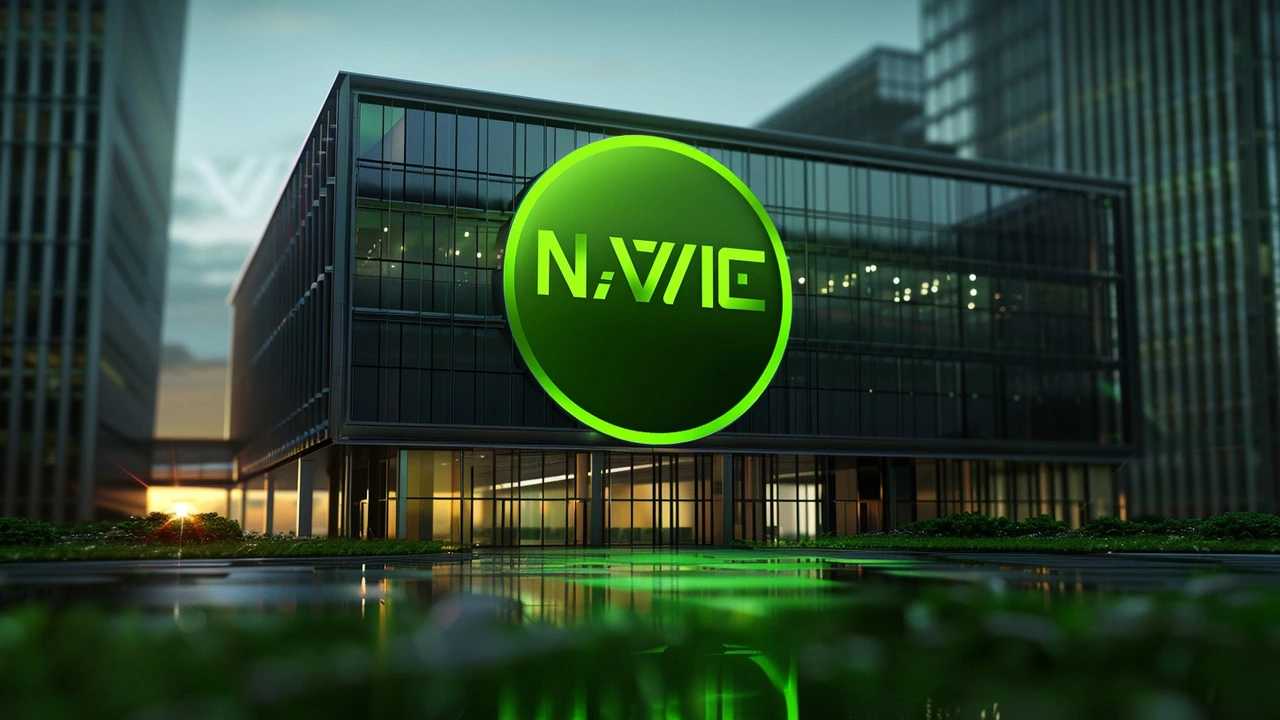Nvidia's Ascent: Revolutionizing the Market
Nvidia has just made history by becoming the world’s most valuable company, surpassing tech giant Microsoft. This momentous achievement comes as the company's high-end processors fuel advancements in artificial intelligence (AI) technology. The company's stock value has been on an extraordinary journey, with shares appreciating by an impressive 3.7% to reach $135.87, marking a market capitalization of $3.341 trillion. This surge not only displaced Microsoft with its $3.314 trillion market value but also saw Nvidia passing Apple, which fell to a market value of $3.280 trillion. It’s a significant moment for Nvidia, one that has been several years in the making.
The ripple effect of Nvidia's rally has set the S&P 500 and Nasdaq to new record highs, underlining the influential role that Nvidia plays in today's market. Just this year alone, Nvidia’s stock has seen nearly a threefold increase, which is a testament to the burgeoning demand for its advanced AI processors. The spike in value comes at a time when giants like Microsoft, Meta Platforms, and Alphabet are aggressively expanding their AI computing capabilities. All of this intensifies Nvidia's dominance in the chip-making industry, establishing it as a go-to provider for AI infrastructure.

The Journey to the Top
Nvidia's rise hasn’t been overnight. Over the past year, the company’s market value has ballooned from $1 trillion to a staggering $3 trillion. Such exponential growth can be attributed to the company's cutting-edge technology, which has made its processors highly sought after. By recently implementing a 10-for-one stock split, Nvidia has also managed to become more appealing to individual investors. This strategic maneuver has not only broadened its investor base but also increased liquidity in the market, thereby boosting its stock value further.
A Closer Look at Nvidia's Technology
The secret sauce behind Nvidia's meteoric rise lies in its high-performance AI processors. These processors are pivotal in the development of various AI applications, ranging from autonomous driving to data analysis and machine learning. As industries increasingly rely on AI to automate processes and gain analytical insights, Nvidia’s processors have become essential components. Limited supply and high demand have driven prices up, but customers remain willing to pay the premium for top-notch performance. This insatiable hunger for advanced computing capabilities has been a goldmine for Nvidia, catapulting it to the forefront of not just the tech sector but global business as a whole.

Market Influence and Speculation
The substantial value attached to Nvidia raises alternative discussions within investment communities. High expectations are a double-edged sword. While they affirm the company's excellent performance thus far, any potential setback could lead to a heightened level of market correction. When a company shows a dramatic increase in market value, it invites a speculative bubble, spurred on by investor enthusiasm. Market strategists are mindful of this and caution against over-optimism. As they put it, the higher the climb, the steeper the fall. Therefore, pressing analysts' projections anticipate possible challenges that could temper the company’s runaway success.
Despite the speculative concerns, Nvidia continues to thrive in daily trading volumes, which average around $50 billion. This figure dwarfs the volumes of many of its competitors and cements Nvidia’s standing as a market leader. The company's financial health shows robust returns, and its visionary leadership is not just looking towards the immediate gains but setting sights on long-term growth as well. Their relentless focus on innovation and expansion within the AI and high-performance computing sectors indeed signifies more prosperous endeavors awaiting Nvidia.
The Road Ahead
Looking forward, Nvidia's trajectory suggests even greater advances, bolstered by the continuous development of AI technologies. Industry insiders predict that the demand for high-end processors will not plateau anytime soon. Moreover, new markets, including healthcare, automotive, and finance, are increasingly turning to AI solutions to resolve complex issues and innovate their operations. Given these trends, Nvidia’s prominence in the tech ecosystem appears secure for the foreseeable future.
However, stakeholders are keenly aware of the technological landscape's volatile nature. Companies can rise and fall with astonishing speed, and keeping an edge requires relentless innovation and astute management. For Nvidia to maintain its enviable position, continual investment in research and development will be critical. Moreover, effective supply chain management to meet and sustain demand will remain a crucial challenge and determinant of long-term success.

Conclusion
Nvidia's climb to being the world's most valuable company is an achievement worth celebrating. Fueled by high-performance AI processors and strategic initiatives, the company has soared past both Microsoft and Apple within a short span. Yet, this accomplishment isn't merely about numbers and market value. It's also about innovation, determination, and the drive to be at the forefront of technological advancements. While challenges certainly loom, Nvidia's ability to adapt and thrive suggests a promising horizon for this tech behemoth. Still, only time will tell if it can sustain this unprecedented trajectory.
Nvidia's unprecedented success story serves as an inspiration across the business world, demonstrating how a blend of cutting-edge technology and strategic foresight can redefine market dynamics. As AI continues to shape the future, Nvidia's role as a pivotal player underscores its transformative impact on the global stage.





